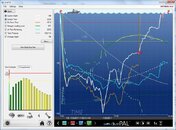Bubbletrubble
Contributor
OK. So you turned off the "Deepstop" setting on your Vyper Air...even though you planned to do a profile that contained a deep stop. Why?Deepstop set to OFF
I don't think I understand the point of your experiment. What was the objective?
Based on your comments, I think that Suunto must have implemented a slightly different prescribed ascent rate in its "newer" computers, like the Vyper Air.Ascend at 33f/min or faster. There is a lot of space between 33 and 60
My old Mosquito will register an ascent rate violation if the ascent rate ever exceeds 39 ft/min instantaneously or exceeds 33 ft/min "continuously" (regardless of whether you are in deco mode or not).
I realize that other manufacturers have implemented a "tiered" prescribed ascent rate schedule. For example, from a depth of 100 ft. to 60 ft., the maximum ascent rate allowed might be 66 ft/min, whereas from a depth of 60 ft. and shallower, the maximum ascent rate might be 33 ft/min.





